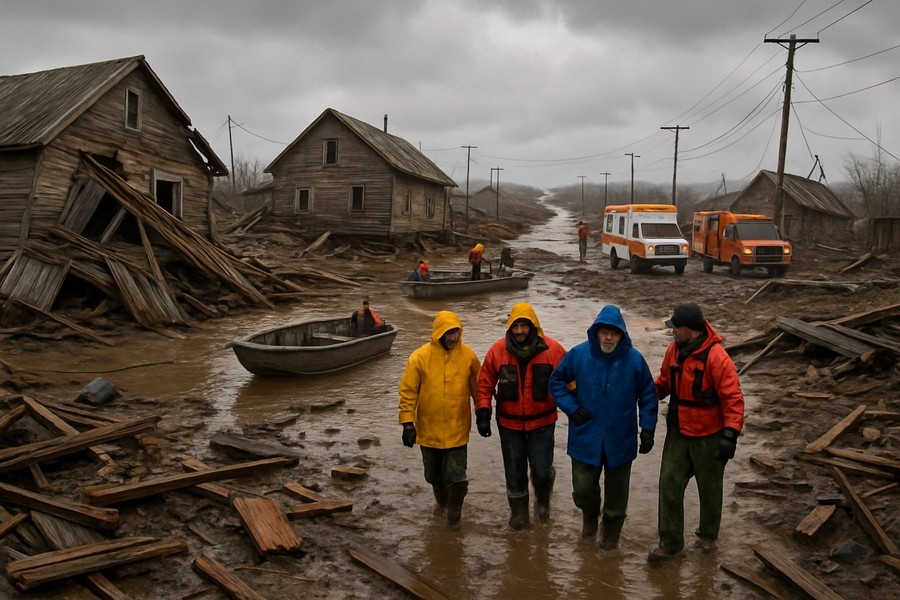
Unprecedented Storm Wreaks Havoc in Western Alaska
A severe storm has claimed a life and caused significant disruption in western Alaska, leading to the rescue of more than 50 individuals and the displacement of over a thousand residents. The aftermath of the storm, which is a remnant of a typhoon, caused widespread flooding, destroying homes and infrastructure. The impact was so severe that it forced residents to seek shelter.
Storm Aftermath Reveals Significant Damage
As the storm subsided, the enormous damage it caused became evident. Over a thousand individuals were forced to leave their homes, numerous houses were destroyed or swept away by the floods, and vital infrastructure like sewage systems and wells were damaged. Additionally, the storm destroyed significant amounts of stored food. The severity of the storm was such that it prompted comparisons to other major natural disasters, such as Hurricane Katrina.
A woman was found dead in one of the villages, and two other individuals are still unaccounted for. The authorities have stated that the woman will be identified once her family has been informed.
Rescue Efforts Continue Amidst Widespread Devastation
Rescue operations have been ongoing, with 51 people rescued from the worst-hit areas. These operations have been carried out by different groups, including the Coast Guard and the National Guard. Many have been evacuated for medical attention, and plans are in place to evacuate more people with medical needs, including the elderly and pregnant women.
Emergency shelters have been set up in schools, with around 400 people taking refuge in one and 680 in another. The number of people displaced from their homes across the region is estimated to be over a thousand.
Rescue efforts are still ongoing, including a search for the two missing individuals. The extreme conditions have made the rescue efforts challenging, with one official describing the situation as "very, very scary."
Communities Face Long-Term Crisis
The storm has caused significant damage to the transportation infrastructure, with over 50 airports affected. One of the runways was cracked, making access to the community difficult. With many people taking shelter in schools and other public buildings, the conditions are expected to deteriorate in the coming days.
The storm has also caused long-term problems for the region, which is already grappling with housing issues. Many homes have been destroyed or severely damaged, and it's anticipated that the process of rebuilding these homes will take years. This situation means that those displaced by the storm will have to find alternative housing for a prolonged period.
The health organization in the region is sending supplies, including water, food, and sanitation items, to the hardest-hit communities.
Record-Breaking Storm Linked to Climate Change
Critics have linked the severity of the storm to climate change. They argue that the storm, which initially formed near Japan, gained strength as it moved over the warmer waters of the North Pacific, a phenomenon attributed to climate change. However, some officials have downplayed this link, attributing the storm to natural causes and insisting on the need for preparedness for all types of disasters.
The storm brought record-breaking tides and high winds, with one location recording winds of 107 mph. The waters are now receding, but they still remain above normal levels. The forecast predicts continued windy conditions and fog.
